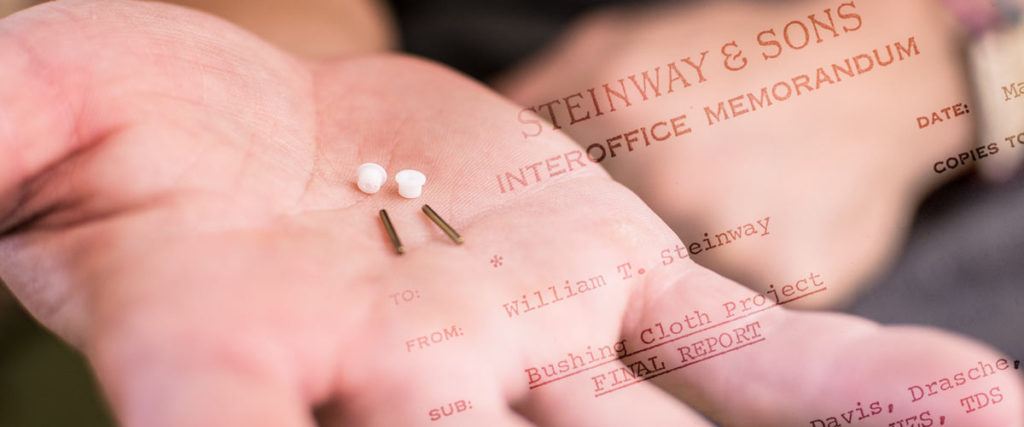
The Teflon Bushing in Steinway Pianos– A Failed Experiment
If there was one quality that marked the early days of Steinway & Sons, it was the family company’s inherent desire to invent, tweak, and improve the quality of their pianos. This led to famous innovations and improvements to the grand piano design that continues to be standard a century later. Almost all of the company’s patents were filed during these first years. The study of the lineage of the modern grand piano is a fascinating one, filled with stories of both success and failure. The ‘Teflon Era’ will forever remain an infamous time for Steinway & Sons, but one that forced the industry to adopt new ideas and parts.Increased Competition – Attempted Innovation
During the early 1960s, work began on another project that company leadership hoped would again boost the company’s reputation as a world-leading instrument. Continued pressure from less expensive yet high-quality pianos from Japanese makers like Yamaha and Kawai began to push Steinway from its position as the North American piano king. (This battle between the ‘East and the West’ wages on – even today. ) A number of their major American competitors were either long gone or in decline as the once-massive American piano industry began to shrink. A document provided to us here at Chupp’s Piano Service proves interesting. In a letter dated April 6th, 1979 to the late Ed Hendricks, a former Vice President of Marketing and owner of Hendricks’ Pianos in Chicago, William T. Steinway noted that the company was eager to study Yamaha’s new designs and had already acquired a new Kawai grand in an attempt to glean knowledge from their competitor’s latest offerings.
The Launch of the Teflon Bushings – 1962
In 1962 a new product was introduced by Steinway that was initially hailed and later reviled. That new product was the Teflon Bushing. [A vital part of the company’s then-new marketing term, the ‘Perma-Free Action.’] The initial reviews looked promising. The small bushings in the action and back action had traditionally been made of cloth, which was susceptible to changes in humidity. Teflon was (and is) much more dimensionally stable and was not affected by these changes. It was hoped that this would be an improvement in the overall stability of the piano. Steinway contracted with outside companies for these bushings and soon launched them into use on all their New York-built pianos. Hamburg stuck to the traditional method of utilizing cloth bushings. Initial field reports were good; however, problems soon began to emerge.
A Good Initial Response
The Teflon bushings performed as expected. They resisted swelling and stayed stable. Teflon parts became a key selling point for Steinway pianos. (One handout utilized by dealers, attacking Baldwin uprights during this time period, noted that Baldwin uprights still utilized cloth bushings.) What was not thought through was the fact that these bushings are surrounded by wood, which, unlike the Teflon, does react to humidity shifts. Another issue was that the majority of piano technicians, even those who were very qualified, simply did not understand how to work with these new bushings. With Steinway making up a relatively low percentage of the piano market, many technicians would go months if not years before working on a Steinway. This meant that technicians did not always find it worthwhile to learn an entirely new method of repair, which they might not use more than once or twice. The industry standard was and still is, to utilize bushings made of cloth. Steinway attempted to combat this by holding numerous training seminars throughout the country and sending out ‘Teflon education kits.’
As pianos that had the Teflon bushings continued to be played and utilized, the main issue that is now associated with them began to emerge. The expansion and contraction of the wood eventually caused unwanted play between the inflexible bushings. Annoying clicking and clacking in Teflon actions and back actions when the wooden parts rubbed against the synthetic parts were a common occurrence. This unwanted touch and sound wreaked havoc on the pianists.
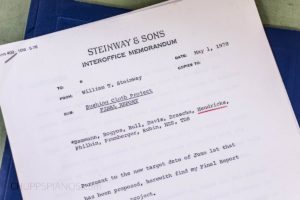
Bushing Cloth Project – FINAL REPORT. Sent to executives within the Steinway & Sons company. [Yes, that is the Pramberger associated with the Pramberger/Young Chang pianos.]
To Change back… or Not – The 1970s
During the 1970s, the debate was fierce within the Steinway & Sons company on how to respond to the growing conclusion that the introduction of new Teflon Bushings had been a failure. These small parts caused reports to flow into the company regarding clients who were unhappy with their new pianos.
In an interoffice memo at Steinway sent on April 1st, 1977, both Henry Bamman who oversaw direct sales and Ed Hendricks who managed dealer sales reported that the new Teflon bushing centers as the top quality issue found in the field. [Bamman went straight to the point. When asked to name the main issues he was dealing with simply wrote “1: Teflon.”] The new parts had caused not only a service issue but a huge marketing weakness as well. (With marketing prowess a key part of the Steinway formula, this was most concerning.)
Internal Strife – The CBS Years
In a May 1st, 1978 memo titled ‘Bushing Cloth Project FINAL REPORT” William T. Steinway concluded that unless they could come up with a completely trouble-free Teflon bushing, they would be unable to overcome the terrible reputation the new parts had developed. The expense and risk of coming up with an entirely new Teflon bushing were judged to be extremely high. He later wrote ‘Bushing cloth is by no means trouble-free, but it is currently in use and is universally accepted in the piano industry.”
(Of note, the possibility of supplying New York action parts to the Hamburg Steinway factory was brought up as a reason to switch back, something that still does not occur. The Hamburg Factory utilizes German-made Renner action parts, which they feel are of higher quality.) The majority of all of this turmoil occurred during the CBS purchase of Steinway, another interesting episode during this era of piano making. Times were somewhat tumultuous for the company and in 1982, Steinway began the transition out of the use of Teflon bushings. This ended a twenty-year practice that has led to these two decades being nicknamed, ‘The Teflon era.’
Fixing the Teflon Issue & Hard Bushings Today
Steinway’s Teflon experiment did much to damage the company’s reputation. It took them many decades to pull themselves out of the hole that the Teflon fiasco dug. There is a good bit of confusion among piano buyers who are considering a Steinway piano built between 1962 and 1982. We at Chupp’s Piano Service often hear pianists say they won’t consider a ‘Teflon era’ grand we have fully rebuilt through our piano restoration services, due to the Teflon. The bushings are a very small part of the action and damper back action, and once we complete a standard restoration (which includes the full replacement of the old action parts) there are none of the problematic Teflon components left in the piano. Once the action is rebuilt with all-new, non-Teflon parts, the piano has no related issues performing as expected. The Teflon problem is solved.
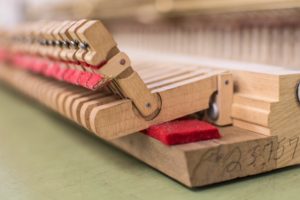
This Teflon back action was installed in a 1925 Model B by the Steinway Factory Rebuilding Center in the mid-1960s. It will be replaced by us with a new back action with correct cloth bushings.
We have also had some success with retaining the original action parts and simply re-bushing the wippens and flanges with traditional bushing cloth as was used during the golden era of Steinway and today. However, the very best solution is to simply replace these Teflon parts with parts bushed with the traditional cloth as re-bushing with cloth is more of a stop-gap solution that still leaves the instrument with decades-old, worn piano action components.
Today, synthetic bushings are utilized with great success in parts manufactured by Wessel, Nickel, and Gross. (Connected with PianoDisc and Mason & Hamlin.) Due to their action parts being constructed out of advanced carbon fiber and other composites, the swelling and shifting with humidity inherent with wooden parts does not occur. This means that the WNG ‘Hard Bushings’ do not have the issues that Steinway’s Teflon Bushing had back in the ‘Teflon era.’
Decades later, the issue with Teflon bushings was solved, but by one of Steinway’s chief competitors.
Interested in learning more about pianos? Keep on following our blog for continued posts and articles. For a list of our current inventory of restored Steinway and Mason & Hamlin grand pianos, click here.
*Documents are from the collection of the late Ed Hendricks, (Lyon & Healey, Steinway & Sons & Hendricks Pianos) courtesy of Bill Jenkins. Article written by Benjamin Rogers and Philip Balke.
Chupp’s Pianos – Restored Steinway & Sons Pianos – New Kawai Grand, Upright and Digital Pianos – Piano Restoration Services
2 Comments
Leave a Reply
You must be logged in to post a comment.



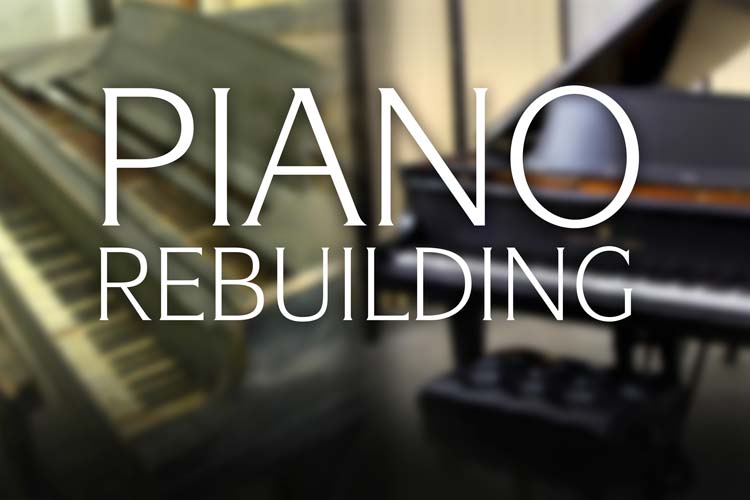

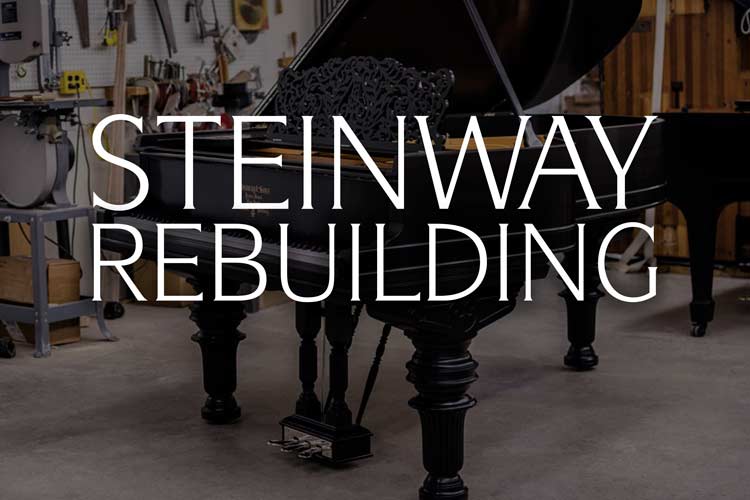
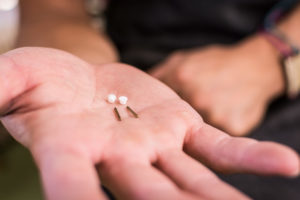
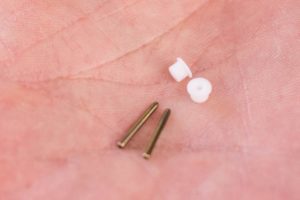
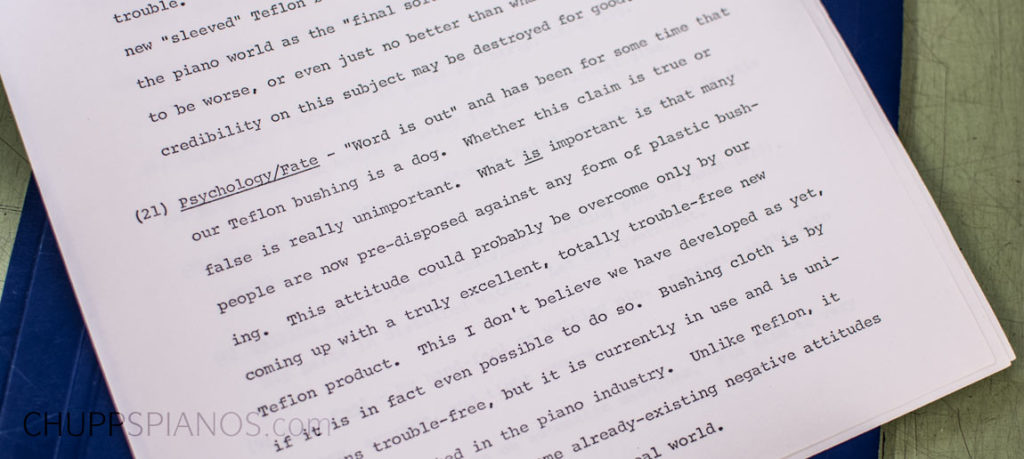
Do you know if the 1983 model B has any issues to be aware of?
We do not have a 1983 Model B available at this time. Steinway phased out Teflon bushings during the year 1982. So if you are referring to any Teflon related issues, they were not used after that date.